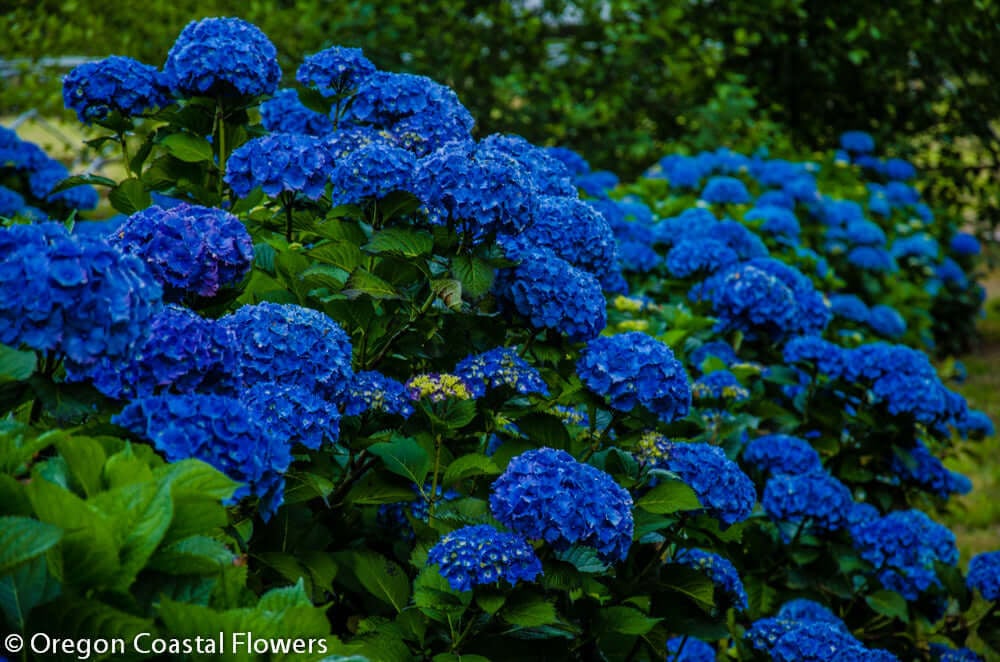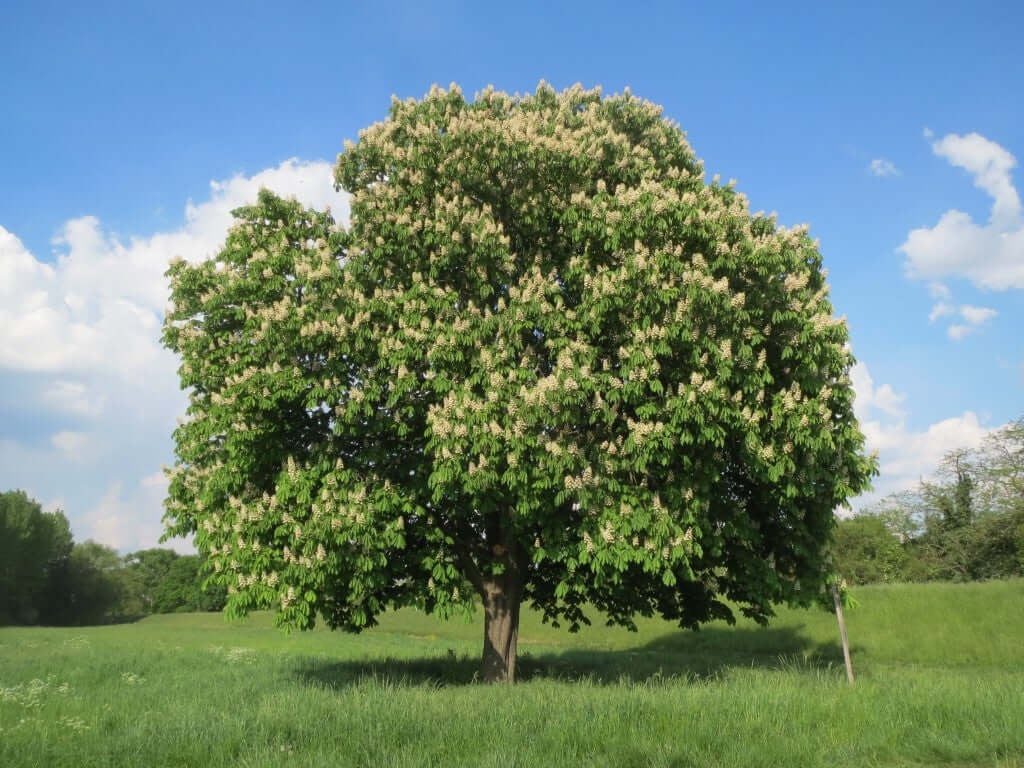The Chinese chestnut tree is scientifically called Castanea mollissima and is a deciduous tree in the Beech family. Well-known for tasty nuts and their vigor, this tree has received significant attention from gardeners and agriculturists worldwide. That makes it versatile and suitable for growth in different landscapes due to its appealing appearance. In this article, some common questions people have about the Chinese chestnut tree will be answered to try and offer more information about its traits, growing conditions, and uses.
What is a Chinese Chestnut Tree?
This medium to large and deciduous tree grows to 30-70 feet (9-21 m). It has glossy leaves elongated with serrations along the margins, usually 4 to 6 inches. The tree blooms in the late spring, during which it bears lengthy and creamy catkins favored by pollinators.
These nuts are not like the sweet chestnuts that are common with American varieties the sweet chestnut nuts are famous for their sweet nature and nutritional value. Furthermore, a tree has a beneficial wooden substance. It can be utilized for making furniture, floors, and joints, among other facilities, because it is strong wood.
When do Chinese chestnut trees bear fruit?
The Chinese chestnut grows with the capacity to bear fruits in the first 3 to 5 years after planting the seeds. The condition of trees, soil, and other conditions can define the points of time. It bears fruit in summer to early autumn, sometimes from August to October.
Notably, the trees can yield lots of fruits when the circumstances permit. A stout and healthy chestnut tree may produce between 30 to 150 pounds of nuts annually, which makes Chinese chestnut trees suitable for producing nuts.
How do you harvest these nuts?
Ripening of Chinese chestnuts is another factor that needs to be considered when harvesting them alongside a lot of time and effort in the correct method. Here's a systematic approach to the process:
- Timing: Monitor the spiny husks. Once they start to crack, the time to harvest comes.
- Equipment: Collect the flowers using a firm hand which should eliminate the need for holding the plants by their spines.
- Collection Method: Swinging the tree or using the stalk to remove the nuts from the tree. This method lets you harvest nuts found naturally falling on the ground.
- Cleaning: When ready for harvest, gather the fruits and clean them of trash, including leaves and twigs.
- Storage: The cleaned nuts should be kept in a cool and dry place, preferably in a refrigerator. Proper drying of the contents of this packaging material makes it quite possible for the packaging to last for as long as several months.
Are Chinese Chestnuts Edible?
The Chinese chestnuts are crunchy with a sweet and nutty feel. They can be consumed in various ways:
- Raw: Raw chestnuts are more like almonds and can be eaten but are bitter; therefore, they must be cooked when harvested.
- Roasted: Preparation is done in this manner, considered one of the favorite methods. Roasting makes the food sweeter, and the food has a unique taste.
- Ingredient: Chestnuts can be eaten after they have been cooked and processed. They are not only eaten raw or added to soups, stuffings, and desserts. Still, they can also be ground into flour for persons with gluten intolerance.
As for nutritional value, Chinese chestnuts contain relatively low amounts of fats and high levels of carbohydrates, fiber, and vitamins.
Does Chinese Chestnut Tree Need Pollination?
They become productive when two different cultivars are planted; Chinese chestnut trees are cross-pollinated like most tree nut species. Although they are self-pollinating, better yields are recorded when the trees are planted together with at least two diverse cultivars. Bees and other pollinators are essential in pollination during the flowering season of the plants. Hence, it is recommended that several cultivars be planted in a single production to maximize nut production.
What are the Pros of Growing Chinese Chestnuts?
Growing Chinese chestnuts offers numerous advantages:
- Nutritional Value: Eating nuts helps those who pick them and other animals to get healthy foods to feed on.
- Economic Aspect: Chestnut trees can play a role in locals' economy and, perhaps, act as a highly profitable crop for some farmers.
- Ecosystem Contribution: It changes the trees and acts as homes and food sources for other wildlife species.
- Aesthetic Appeal: Chinese chestnut trees have added landscape ornamentals with long, glossy leaves and beautiful catkins.
- Soil Improvement: They are a type of deciduous trees that make a positive impact on nature by replenishing organic matter in the soil.
Will They Survive in Cold Regions of the World? Potential and Suitability of Chinese Chestnut Trees
Chinese chestnut trees are relatively tolerant to most environmental conditions but, specifically, flourish in the regions of the USDA plant hardiness zone of 4 to 8. They can endure relatively low temperatures but are delicate to frost during the late spring, which can harm new blossoms. Here are some considerations for cultivation in colder climates:
- Site Selection: Select a site with exposure to direct sunlight (minimum of 6 hours per day) and good drainage.
- Mulching: Spread the mulch around the trunk to prevent the roots from frost.
- Protection: Protecting young trees can be used in the microclimate at nighttime, and with particularly low temperatures, young trees can be covered with burlap.
What is the difference Between the Chinese Chestnut Tree and Chestnut Oak Tree?
While both the Chinese chestnut tree and chestnut oak tree share the chestnut name, they belong to different genera, which means they have distinct characteristics:
Chinese Chestnut Tree (Castanea mollissima): Especially cultivated for its edible seeds, it consists of serrated leaves, peg-like strobili, and rounded apical tuft.
Chestnut Oak Tree (Quercus prinus): This tree bears acorns and has larger leaves with rounded tips of the lobes. It is well known for timber production, not for food consumption.
Whether one wants to extend plant collection in the backyard or a farmer desiring to venture into the production of nuts, the information available concerning the Chinese chestnut tree makes it possible to enjoy the tree and the fruits that come with it.
Unique Ways to Utilize the Chinese Chestnut Tree
The Chinese chestnut tree (Castanea mollissima) is appreciated for its robustness and ability to adapt, as well as numerous agricultural and environmental advantages. Chinese chestnut trees separate themselves from other nut-bearing trees through their delicious nuts and multiple ornamental and practical uses. The Chinese chestnut tree provides unique benefits, including soil enhancement and premium produce for nearby markets.
The Chinese chestnut tree is famous mainly because it produces chestnuts. People typically consume these nuts after roasting or boiling them, and they work well as ingredients in baked products and various soups and stews. These flavors' natural sweetness and richness enhance both dessert and main course recipes. The early maturation of Chinese chestnuts compared to European or American varieties enables growers to harvest quickly and gain an advantage by accessing markets sooner.
The Chinese chestnut tree gains recognition not only for culinary purposes but also because of its aesthetic value in landscaping. The combination of glossy, serrated leaves and unique spiky burs gives this tree strong landscaping appeal. Many property owners plant Chinese chestnuts because they provide functional advantages while offering visual appeal to enhance curb appearance, garden biodiversity, and shade coverage. When Chinese chestnut trees reach maturity, they become prominent features in parks and arboretums, and people enjoy watching seasonal transformations and wildlife feeding on their nuts.
Chinese chestnut trees contribute to ecological well-being. The extensive root systems of these trees function as natural barriers against soil erosion and protect landscapes from potential damage caused by surface water runoff and soil degradation. Farmers and conservationists can use these trees for strategic planting activities to rehabilitate sloped areas and restore eroded lands. As leaves and fallen burs decompose, they transform into organic material, which enhances soil quality through nutrient enrichment and sustains different types of soil microorganisms. This process leads to a healthier habitat for adjacent plants and promotes superior soil fertility levels.
Chinese chestnut trees gain favor among beekeepers because their flowers bring in numerous pollinating insects. The scent of sweetness and plentiful pollen makes the Chinese chestnut tree a superior foraging option for bees, producing distinctive chestnut-flavored honey. Small-scale farms that integrate nut production with beekeeping benefit from the additional market value of this artisanal chestnut-flavored honey.
The wood from the Chinese chestnut tree serves a secondary purpose by being used in small woodworking crafts. Its moderate durability makes it appropriate for creating furniture, tool handles, and decorative items that combine practical use with rustic beauty. Artisans choose Chinese chestnut wood as their material of preference despite its softer nature because it features a unique grain pattern and warm color tone.
Traditional and modern herbalists have shown interest in the potential health benefits of Chinese chestnut bark and leaves. Initial research indicates that active tree bark components could deliver antioxidant and anti-inflammatory benefits. Future studies will investigate optimal ways to utilize its therapeutic properties, but usage guidelines must remain standard practice.
The Chinese chestnut tree has diverse practical uses in culinary arts, decorative landscaping, ecological systems, and traditional crafts. Cultivating and maintaining these adaptable trees will enable property owners and communities to enjoy dependable nut yields while improving landscape aesthetics and supporting the lasting well-being of regional ecosystems.
Read more

Red Maple Trees are fast growing shade trees with vibrant autumn colored foliage. They are highly sought after due to their beautiful Fall foliage.

Blue hydrangeas make a great addition to your outside area and interior, which people adore as the result of plant breeding due to their bright color and abundant flowering.



